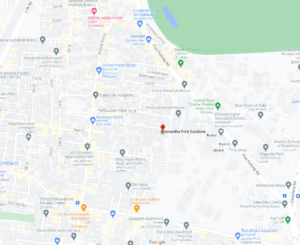You Won’t Believe What These High Temperature Labels Can Do for Your Factory and Industries!
You Won’t Believe What These High Temperature Labels Can Do for Your Factory and Industries!
When it comes to industrial environments, durability, resilience, and reliability aren’t just preferences—they’re non-negotiable requirements. In settings where equipment runs hot and safety is paramount, one small component can make a big difference: high temperature labels. These seemingly simple tags are engineered to withstand extreme thermal conditions without degrading, peeling, or losing legibility.
In this in-depth article, we’ll explore everything you need to know about high temperature stickers, thermal resistance labels, and why they’ve become a critical asset in modern manufacturing and industrial operations.
What Are High Temperature Labels?
High temperature labels are specially designed identification and tracking solutions built to endure temperatures that can reach as high as 1200°F (650°C), depending on the application and material. These labels remain intact and legible in environments where standard adhesives, inks, and substrates would burn, melt, or flake off.
These labels are not just heatproof—they are engineered for resilience against abrasion, solvents, UV exposure, and even cryogenic conditions, making them suitable for diverse applications from electronics to aerospace.
Industrial Applications of High Temperature Stickers
The adaptability of high temperature stickers allows them to be integrated into a vast range of industrial environments. Here’s how they serve various sectors:
- Electronics and PCB Manufacturing
In the world of printed circuit boards (PCBs), components undergo wave soldering and re-flow processes that expose them to extremely high temperatures. Thermal resistance stickers are used to track these boards throughout the production cycle. They fix strongly and resist daubing, ensuring fundability from start to finish.
- Automotive & Aerospace Components
Whether it’s under-the-hood environments or aerospace assemblies, thermal resistance labels are vital for tracking parts, providing safety information, or maintaining regulatory compliance. These environments regularly exceed 200°C, and only high-grade labels can endure such heat.
- Steel, Forging, and Metal Fabrication
For hot-rolled coils, billets, or forged parts, standard tags won’t last. High temperature labels are used in these settings to retain identification, batch numbers, and process instructions directly on parts throughout the heating and cooling phases.
- Chemical and Industrial Processing
Pipes, tanks, and valves in chemical plants often reach elevated temperatures due to reactions or high-pressure steam. Here, heat-resistant stickers with chemical tolerance become critical for system labelling and hazard indication.
- Oven and Kiln-Based Manufacturing
In industries like ceramics, glass, or powder coating, components are cured in kilns or ovens. Thermal resistance labels ensure that parts are labelled accurately before, during, and after the heating cycle.
Features That Set High Temperature Labels Apart
Extreme Thermal Endurance
The standout feature of these labels is their ability to maintain integrity even under extreme heat, often ranging from -40°C to +650°C.
Material Variety
Depending on the requirement, these labels are crafted from polyimide, polyester, or metal foil substrates. Polyimide labels are especially popular due to their incredible resistance and thin profile.
Strong Industrial Adhesives
The adhesive systems used in high temperature stickers are pressure-sensitive and formulated to bond strongly to various surfaces like steel, glass, plastic, and ceramics—without leaving residue or curling.
Chemical and UV Resistance
Many environments also involve chemical vapors, solvents, and UV radiation. These labels are built to resist fading, corrosion, and ink smudging, ensuring long-lasting readability.
Custom Print Options
From barcodes and QR codes to variable data printing, high temperature labels can be customized for logistics, batch tracking, safety marking, and more. Some are even pre-printed with thermal transfer printers for added flexibility.
How High Temperature Labels Improve Operational Efficiency
Industrial operations thrive on precision and traceability. By using thermal resistance stickers, factories benefit in the following ways:
- Reduced Downtime: Labels remain legible and intact, reducing errors and relabeling delays.
- Better Compliance: Many industries demand strict ISO, OSHA, or ANSI labelling standards. These labels help meet and exceed those requirements.
- Cost Savings: Although they may cost slightly more upfront, the longevity and reliability of high temperature labels reduce replacement frequency and rework.
- Enhanced Safety: Proper labelling ensures workers are informed of risks, especially in environments involving high heat, flammable substances, or electrical systems.
Choosing the Right Thermal Resistance Label for Your Needs
Selecting the right label depends on various factors. Here’s what you should consider:
1. Operating Temperature Range
Always match the label to your environment’s peak temperature. Polyimide labels typically withstand up to 500°C, while aluminium foil labels may go higher.
2. Surface Type
Ensure the label is compatible with the surface—whether it’s metal, powder-coated, curved, or textured.
3. Print Method
Thermal transfer printing is ideal for on-demand labelling. Ensure you use resin-based ribbons for maximum durability.
4. Adhesive Performance
For temporary labels, choose removable adhesives. For permanent applications, high-tack industrial adhesives work best.
5. Label Certification
Depending on your industry, you may need UL-rated, RoHS-compliant, or REACH-certified high temperature stickers for regulatory approval.
Thermal Resistance Stickers vs. Regular Labels
Feature | Thermal Resistance Stickers | Standard Labels |
Temperature Tolerance | Up to 650°C | Up to 80°C |
Chemical Resistance | High | Low |
UV Resistance | Excellent | Limited |
Durability | Long-term | Short-term |
Adhesion Strength | Very strong | Moderate |
Printing Methods | Thermal Transfer, Laser | Inkjet, Flexo |
Common Materials Used in High Temperature Labels
Here are the top materials and where they are most effective:
- Polyimide Film – Best for electronics and PCB tracking.
- Aluminium Foil – Suitable for extreme temperatures and rough environments.
- Polyester Film – Used for slightly lower temperatures but excellent for moderate heat applications.
- Ceramic Coated Tags – Ideal for steel or furnace tracking applications.
Top Use Cases in Indian Industry
At Anandha Print Solutions Pvt Ltd, we have successfully implemented thermal resistance labels in diverse settings:
- Automobile Engine Plants: Tracking engine blocks during heat treatments.
- Steel Rolling Mills: Labelling coils post-hot rolling.
- Electronics Manufacturers: SMT and wave soldering batch control.
- Chemical Plants: Pipe and valve identification with safety color codes.
- Solar Panel Manufacturers: Weather and heatproof serial tagging.
How to Maximize the Life of High Temperature Labels
To ensure optimal performance, follow these best practices:
- Clean the Surface Thoroughly before applying labels.
- Use Recommended Ribbons and Printers for thermal transfer printing.
- Avoid Touching Adhesive Areas during application.
- Let the Label Cure for a few hours before exposing it to heat.
- Use Edge Sealing Films for labels exposed to heavy steam or corrosive vapor.
Why Choose Anandha Print Solutions Pvt Ltd for Thermal Labels?
We are one of the most trusted high temperature label manufacturers in Chennai, offering:
- Customized solutions with various materials, shapes, and sizes
- In-house label testing to meet temperature and chemical resistance standards
- Fast turnaround time for urgent industrial needs
- Expert guidance on label compatibility, printing technology, and surface prep
Whether you’re in aerospace, automotive, steel, or electronics, our thermal resistance stickers are engineered to perform reliably.
Conclusion: High Temperature Labels Are the Silent Workhorses of Industry
In high-stakes environments, reliability isn’t a bonus—it’s a must. High temperature stickers quietly carry the burden of safety, traceability, and compliance without fail. Their resistance to extreme heat, chemicals, and mechanical stress makes them an indispensable asset across modern industries.
Invest in labels that last. Choose durability. Choose precision. Choose performance.
Contact Details:
Address:
ANANDHA PRINT SOLUTIONS PVT LTD
32/2, First Floor,
Sathanipet 2nd Street,
Adj. Five Furlong Road,
Maduvinkarai, Guindy,
Chennai, Tamil Nadu,
India- 600 032.
Phone:
+91 98409 64267
Email:
info@aprints.in
sales@aprints.in
admin@aprints.in
accounts@aprints.in
design@aprints.in
Geo – Domestic State Supplies
Andhra Pradesh | Arunachal Pradesh | Assam | Bihar | Chhattisgarh | Goa | Gujarat | Haryana | Himachal Pradesh | Jharkhand | Karnataka | Kerala | Madhya Pradesh | Maharashtra | Manipur | Meghalaya | Mizoram | Nagaland | Odisha | Punjab | Rajasthan | Sikkim | Tamil Nadu | Telangana | Tripura | Uttarakhand | Uttar Pradesh | West Bengal
Geo – Domestic City Supplies
Chennai | Mumbai | Kolkatta | Delhi | Bengaluru | Hyderabad | Coimbatore | Thirchy | Madurai| Salem | Erode | Kanyakumari | Thanjavur | Tirunelveli | Vellore | Tiruppur | Kochi | Thiruvananthapuram | Kozhikode | Thrissur | Kollam | Tumkur | Mangalore | Mysore | Udupi | | Davangere | Dharwad | Hubli | Belgaum | Chitradurga | Karwar | Batkal | Visakhapatnam | Vijayawada | Nellore | Sri City (Tada) | Rajahmundry | Ongole | Tirupathi | Kakinada | Amaravathi | Guntur | Anantapur | Kadappa | Ahmedabad | Surat | Vadodra | Rajkot | Bhavnagar | Jamnagar | Jaipur | Jodhpur | Udaipur | Ajmer
International Supplies
Asia- Malaysia | Singapore | Japan | Korea | Thailand | Myanmar | Indonesia | Vietnam | Cambodia | SAARC- Srilanka | Bangladesh | Nepal | Bhutan | Afghanistan | Africa- Algeria | Ethiopia | Ghana | Nigeria | Uganda | Kenya | Tanzania | Uganda | Zambia | Zimbabwe | Egypt | Middle East- UAE | Kuwait | Qatar | Oman | Kingdom of Saudi Arabia | Bahrain | Jordan | Europe- United Kingdom | Germany | France | Switzerland | Italy | Spain | Portugal | Norway | America– United States Of – America | Canada | Mexico | Brazil | Argentina | Greenland | Other Countries – Russia | Australia






